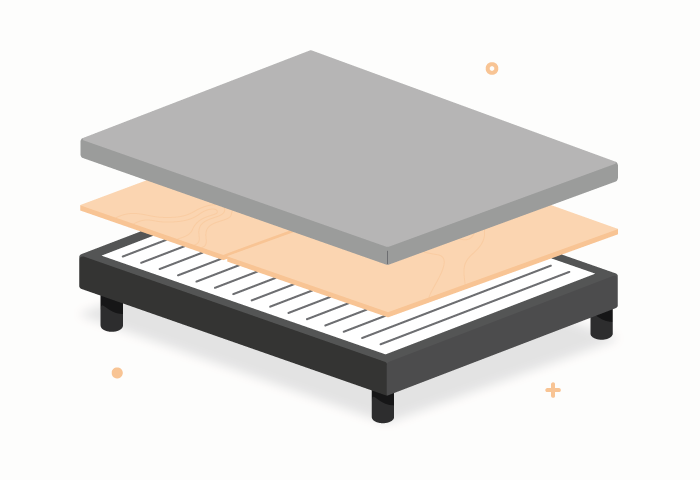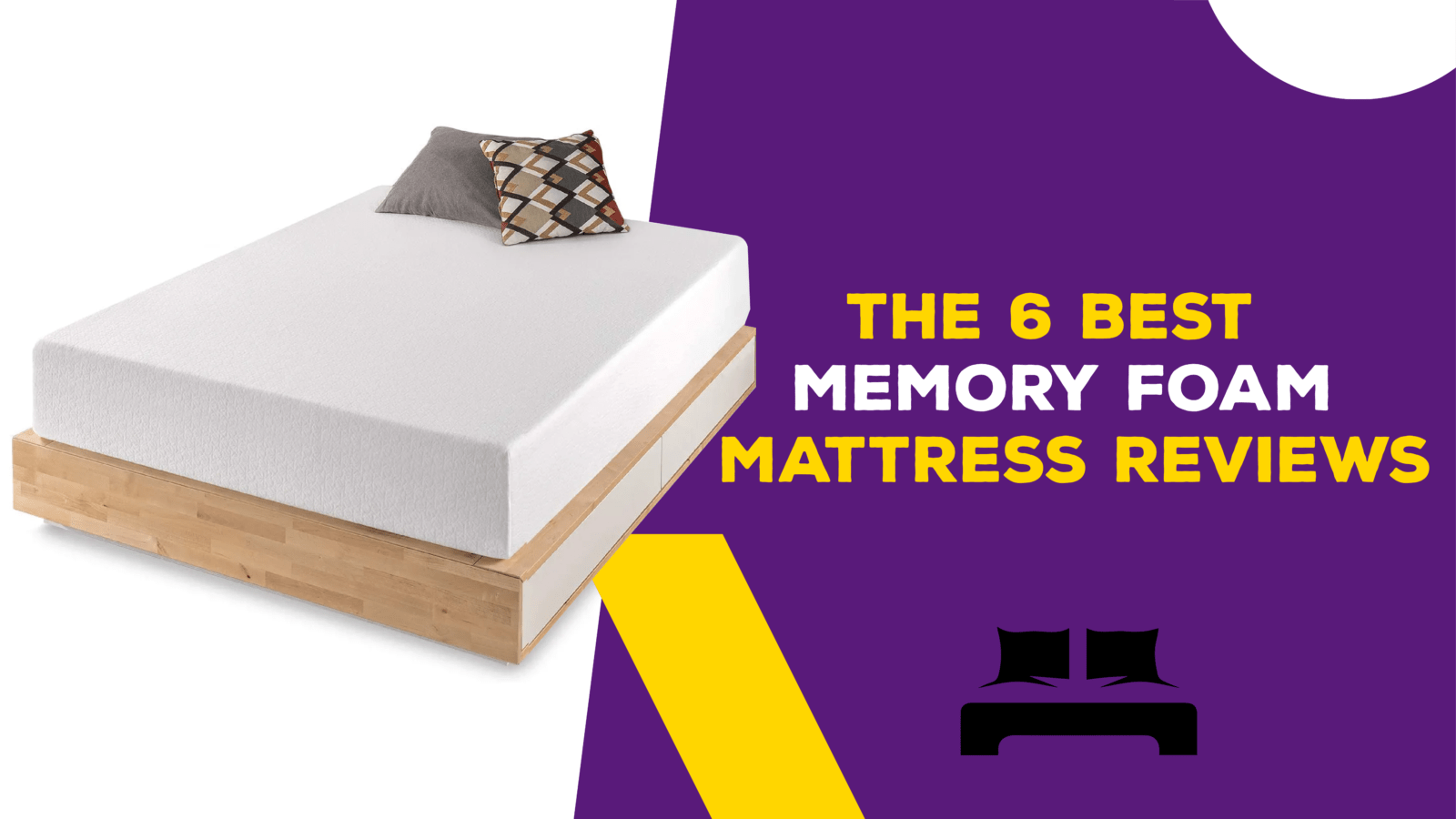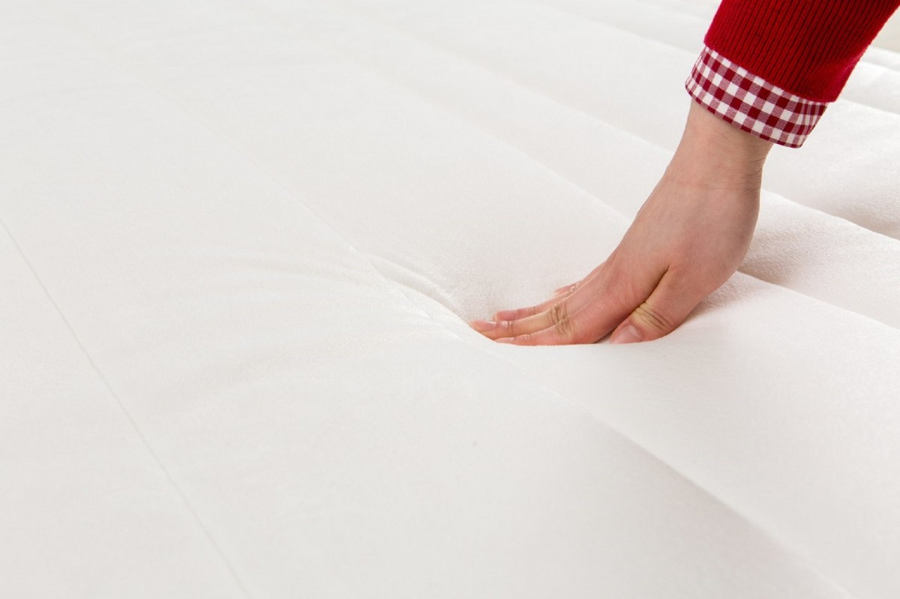Memory foam mattresses have become increasingly popular in recent years for their ability to conform to the body and provide comfortable support. However, like any other mattress, memory foam mattresses can also develop sag over time. This can be a frustrating problem for many sleepers, as a sagging mattress can lead to discomfort and disrupted sleep. In this article, we will explore the causes of memory foam mattress sag and provide tips on how to fix it.Memory Foam Mattress Sag: What Causes It and How to Fix It
If you've noticed that your memory foam mattress has started to sag, don't panic. There are several steps you can take to fix the problem and restore your mattress to its original comfort level. 1. Rotate your mattress regularly. One of the main causes of memory foam mattress sag is uneven weight distribution. To prevent this, it is important to rotate your mattress regularly, ideally every 3-6 months. This will ensure that the mattress wears evenly and will help to prolong its lifespan. 2. Use a mattress topper. If your memory foam mattress is already sagging, using a mattress topper can help provide extra support and cushioning. Look for a topper made from high-density foam or latex, as these materials are known for their durability and ability to maintain their shape. 3. Invest in a mattress support system. Sometimes, a sagging memory foam mattress is caused by a weak or inadequate bed frame or foundation. In this case, investing in a mattress support system, such as a box spring or slatted bed base, can help to alleviate the sagging and provide better support for your mattress. 4. Try flipping your mattress. While most memory foam mattresses are designed to be used on one side only, some models can be flipped to help distribute weight more evenly. Check with the manufacturer to see if your mattress is suitable for flipping. 5. Consider replacing your mattress. If your memory foam mattress is more than 8 years old and has developed significant sag, it may be time to start shopping for a new one. While memory foam mattresses are known for their durability, they do have a lifespan and will eventually need to be replaced.How to Fix a Sagging Memory Foam Mattress
Of course, the best way to deal with a sagging memory foam mattress is to prevent it from happening in the first place. Here are some tips to help extend the life of your mattress and prevent sagging: 1. Invest in a high-quality mattress. A good quality memory foam mattress will be made from durable materials and will maintain its shape and support for longer. Do your research and choose a reputable brand with good customer reviews. 2. Use a mattress protector. A mattress protector can help to keep your mattress clean and free from spills and stains, which can cause sagging over time. Look for a waterproof, breathable protector that will also provide a barrier against dust mites and other allergens. 3. Avoid jumping on your mattress. While it may be tempting to jump on your memory foam mattress, this can cause uneven wear and tear and lead to sagging. Stick to using your bed for sleeping and other quiet activities. 4. Keep your mattress supported. As mentioned earlier, a weak or inadequate bed frame or foundation can contribute to memory foam mattress sag. Make sure your mattress is properly supported to help maintain its shape and support. 5. Follow the manufacturer's care instructions. Different types of memory foam mattresses may have specific care instructions to keep them in good condition. Be sure to follow these instructions to avoid any potential damage or sagging.5 Tips for Preventing Memory Foam Mattress Sag
If you've noticed some sagging in your memory foam mattress, you may be wondering if it's a normal occurrence. The truth is, a little bit of sag is to be expected over time, especially in areas where you sleep most frequently. However, excessive sagging can impact the comfort and support of your mattress and should be addressed. If you're experiencing sagging after only a few months of use, it could be a sign of a low-quality mattress or improper care. In this case, you may want to consider contacting the manufacturer for a warranty claim or investing in a new mattress.Memory Foam Mattress Sag: Is It Normal?
If you're in the market for a new memory foam mattress, it's important to choose one that is less likely to sag over time. Here are some factors to consider: 1. Density. A higher density foam will be more supportive and durable, making it less likely to sag. 2. Thickness. A thicker mattress will have more material to support your body, which can help to prevent sagging. 3. Warranty. Look for a mattress with a warranty of at least 10 years, as this is a good indicator of its quality and durability. 4. Brand reputation. Stick to reputable brands with good customer reviews to ensure you are getting a high-quality mattress.How to Choose a Memory Foam Mattress That Won't Sag
Now that we've covered how to fix and prevent sagging in a memory foam mattress, let's take a closer look at some of the common causes and solutions: 1. Poor quality materials. As with any other product, the quality of the materials used to make a memory foam mattress can vary greatly. Lower-quality foams may be more prone to sagging, while higher-quality materials will be more durable and provide better support. 2. Improper care. Not following the manufacturer's care instructions, such as using the mattress on an improper base or failing to rotate it regularly, can cause sagging and impact the lifespan of your mattress. 3. Excessive weight. Memory foam mattresses are designed to distribute weight evenly, but if one person is significantly heavier than the other, this can cause uneven wear and sagging in the mattress. 4. Normal wear and tear. Like any other product, memory foam mattresses will naturally wear out over time and may develop some sag. However, proper care and maintenance can help to slow down this process.Memory Foam Mattress Sag: Common Causes and Solutions
If your memory foam mattress has developed significant sagging, you may be wondering if it can be repaired. The good news is, in some cases, it is possible to fix a sagging memory foam mattress. Here's how: 1. Identify the sagging areas. Start by identifying the areas of your mattress that are sagging the most. These are the areas that will need the most attention. 2. Use a mattress topper. As mentioned earlier, using a high-quality mattress topper can help to provide extra support and cushioning for your mattress. 3. Try a mattress wedge. A mattress wedge is a triangular foam wedge that can be placed under your mattress to help provide extra support and reduce sagging. 4. Contact the manufacturer. If your mattress is still under warranty, you may be able to contact the manufacturer for a replacement or repair. Make sure to have your warranty information handy when you contact them.How to Repair a Sagging Memory Foam Mattress
To sum it up, memory foam mattress sag is a common occurrence that can be prevented and fixed with proper care and maintenance. Rotating your mattress regularly, using a mattress topper, and investing in a high-quality mattress can all help to prevent sagging and prolong the lifespan of your mattress. If your mattress has developed significant sagging, there are steps you can take to repair it or contact the manufacturer for a replacement. Remember to always follow the manufacturer's care instructions and choose a reputable brand for the best results.Memory Foam Mattress Sag: What You Need to Know
While memory foam mattresses are known for their durability, there are steps you can take to extend their lifespan and prevent sagging. Here are some tips: 1. Rotate your mattress regularly. As mentioned earlier, rotating your mattress every 3-6 months can help to prevent uneven wear and sagging. 2. Use a mattress protector. A mattress protector can help to keep your mattress clean and free from spills and stains, which can cause sagging over time. 3. Keep your mattress clean. Regularly cleaning your mattress can help to remove any dirt or debris that can cause damage over time. 4. Avoid sitting on the edge of the bed. Sitting on the edge of a memory foam mattress can cause excessive strain and lead to sagging in that area. 5. Use a bed frame or foundation with proper support. Make sure your mattress is properly supported to prevent sagging and maintain its shape and support.How to Extend the Life of Your Memory Foam Mattress and Prevent Sagging
The key to preventing sagging in a memory foam mattress is maintaining proper support. Here are some tips to help you do just that: 1. Check your bed frame or foundation. Make sure your bed frame or foundation is suitable for use with a memory foam mattress and provides proper support. 2. Use a solid foundation. A solid foundation, such as a platform bed or solid wood slats, can provide better support for your mattress compared to a box spring. 3. Use a supportive pillow. A supportive pillow can help to keep your spine aligned while you sleep and prevent excessive strain on your mattress. 4. Avoid overloading your bed. Avoid placing heavy items on your memory foam mattress, as this can cause sagging over time. By following these tips, you can maintain proper support for your memory foam mattress and prevent sagging, ensuring a comfortable and restful sleep every night.Memory Foam Mattress Sag: Tips for Maintaining Proper Support
The Problem of Memory Foam Mattress Sag

Understanding Memory Foam Mattresses
 Memory foam mattresses have gained popularity in recent years due to their ability to conform to the body, providing support and pressure relief. This is thanks to the material's unique ability to respond to heat and pressure, molding to the shape of the body. However, this feature can also lead to a common problem known as mattress sag.
Memory foam mattresses have gained popularity in recent years due to their ability to conform to the body, providing support and pressure relief. This is thanks to the material's unique ability to respond to heat and pressure, molding to the shape of the body. However, this feature can also lead to a common problem known as mattress sag.
The Causes of Mattress Sag
 There are several factors that can contribute to memory foam mattress sag. The most common cause is the weight of the sleeper. Over time, the foam can break down and lose its ability to support heavier individuals, causing the mattress to sink in the middle. Another cause is the quality of the foam. Lower quality foams are more prone to sagging, especially in areas that are frequently used, such as the hips and shoulders.
There are several factors that can contribute to memory foam mattress sag. The most common cause is the weight of the sleeper. Over time, the foam can break down and lose its ability to support heavier individuals, causing the mattress to sink in the middle. Another cause is the quality of the foam. Lower quality foams are more prone to sagging, especially in areas that are frequently used, such as the hips and shoulders.
The Effects of Mattress Sag
 Mattress sag can have a negative impact on both the comfort and the health of the sleeper. As the mattress sags, it can create uncomfortable pressure points that can lead to aches and pains. This can also affect the quality of sleep, as the body is not properly supported and can lead to tossing and turning throughout the night. In addition, sagging can disrupt the alignment of the spine, causing back and neck pain.
Mattress sag can have a negative impact on both the comfort and the health of the sleeper. As the mattress sags, it can create uncomfortable pressure points that can lead to aches and pains. This can also affect the quality of sleep, as the body is not properly supported and can lead to tossing and turning throughout the night. In addition, sagging can disrupt the alignment of the spine, causing back and neck pain.
Preventing and Fixing Mattress Sag
 Fortunately, there are ways to prevent and fix memory foam mattress sag. One option is to invest in a higher quality foam that is more durable and less prone to sagging. Additionally, rotating the mattress every few months can help distribute the weight more evenly and prevent excessive wear in one area. If the sagging has already occurred, using mattress toppers or replacing the foam layers can help restore support and extend the lifespan of the mattress.
Fortunately, there are ways to prevent and fix memory foam mattress sag. One option is to invest in a higher quality foam that is more durable and less prone to sagging. Additionally, rotating the mattress every few months can help distribute the weight more evenly and prevent excessive wear in one area. If the sagging has already occurred, using mattress toppers or replacing the foam layers can help restore support and extend the lifespan of the mattress.
In Conclusion
 While memory foam mattresses offer many benefits, it is important to also be aware of the potential for sagging. By understanding the causes and effects of mattress sag, as well as ways to prevent and fix it, you can ensure that your memory foam mattress continues to provide the comfort and support you need for a good night's sleep.
While memory foam mattresses offer many benefits, it is important to also be aware of the potential for sagging. By understanding the causes and effects of mattress sag, as well as ways to prevent and fix it, you can ensure that your memory foam mattress continues to provide the comfort and support you need for a good night's sleep.


































































